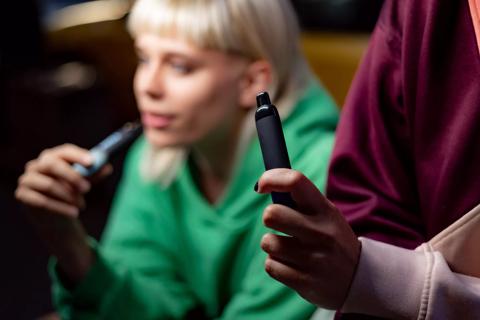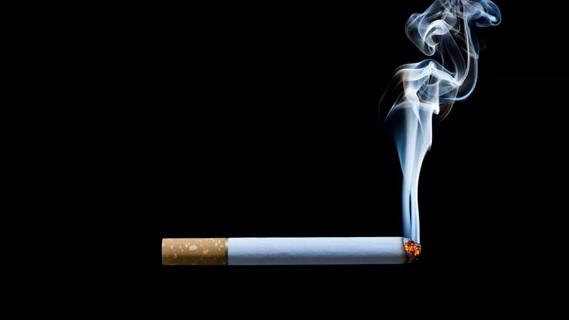Puffing on cigarettes is the leading cause of bladder cancer

It’s not hard to understand the connection between smoking and lung cancer. With each puff on a cigarette, inhaled smoke carries toxic particles deep into your airways and lungs. You can see it happening.
Advertisement
Cleveland Clinic is a non-profit academic medical center. Advertising on our site helps support our mission. We do not endorse non-Cleveland Clinic products or services. Policy
But smoking also is the leading cause of bladder cancer, which doesn’t seem like an expected relationship given body geography. So, what exactly is the link between cigarettes and a disease south of your belt?
Let’s find out from urologist Robert Abouassaly, MD.
Talk about the dangerous effects of tobacco typically focuses on the harm caused when toxins enter your body, says Dr. Abouassaly. But those toxins cause damage on the way out of your body, too.
That brings us to your urinary system and bladder.
Your urinary system — which includes your kidneys, ureters, bladder and urethra — serves as a filtration unit for your body. Its primary duty is to remove toxins and other unnecessary stuff from inside of you.
You eventually get rid of this waste when you pee. But until nature calls, it sits in your bladder. So, if you smoke, carcinogens from cigarettes end up spending a lot of time in that holding tank.
“The bladder can be exposed to very high concentrations of toxins from cigarette smoke for many hours at a time,” explains Dr. Abouassaly.
The result is alarmingly high rates of bladder cancer among smokers.
Research shows that smoking accounts for approximately 50% to 65% of new bladder cancer cases. (To put that in perspective, that’s a diagnosis for between 286,000 and 372,000 people yearly.)
Advertisement
Other statistics to consider:
More men than women are diagnosed with bladder cancer, but the gap is closing. Dr. Abouassaly attributes this to increases in smoking rates among women, particularly younger women.
Studies show smoking is now connected to 50% of bladder cancer cases in women. Previously, it was about 28%.
Bladder cancer is highly curable, particularly if it’s detected quickly. That means paying attention to possible early signs of bladder cancer. Symptoms that shouldn’t be ignored include:
“Many times people delay seeing a doctor,” states Dr. Abouassaly. “Unfortunately, in some cases, by then, it’s too late for anything to be done.”
If you light up cigarettes regularly right now, there’s a simple way to guard against getting bladder cancer in the future: Stop smoking.
Kicking the habit can reduce your risk of bladder cancer by 25% within a decade, researchers say. Your risk level will continue to drop the longer you go without puffing on another cigarette, too.
“Efforts toward smoking cessation are really critical to try to prevent this disease,” reinforces Dr. Abouassaly.
Is it easy to snuff out a smoking habit? No. The nicotine in tobacco makes smoking highly addictive. Studies show that many people try quitting 30 or more times before they finally succeed.
But quitting can be done with a plan, a strong support system and a desire to be healthier. Talk to a healthcare provider about your options for a smoking cessation program. There also are online services to quit smoking.
If you need more incentive other than reduced bladder cancer risk, learn more about the additional health benefits you’ll enjoy once you go cigarette-free.
Advertisement
Learn more about our editorial process.
Advertisement

Smoking can make symptoms from cancer treatment worse, and can even make treatments less effective

Smoking, including secondhand smoke, can worsen your asthma triggers and damage your airways

From dental diseases to cardiovascular problems, the harmful effects of smoking hookah have plenty of downsides for your health

They don’t contain tobacco, but these toxic, highly addictive products can permanently damage your health

Vaping exposes you to thousands of chemicals, including many that cause cancer and lung disease

Even only a couple cigarettes a day can lead to potentially deadly lung diseases like COPD and emphysema

Your risk goes down once you quit, but you may still need a lung cancer screening

Just a single cigarette a day can have serious health consequences

Babies can get congested easily, but you can calm their cough by keeping them hydrated, using nasal drops and running a humidifier

Weight loss may cause loose, sagging skin and muscle loss to your rear

Several conditions, like vitiligo and fungal infection, can cause a loss of pigmentation, leading to white spots or patches on your skin